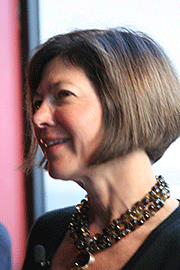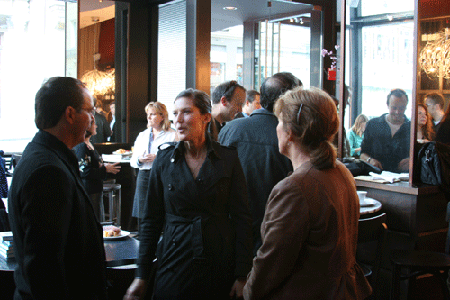 I don’t know about you, but I have a mental ledger of the dumbest things I’ve ever done. It’s been under a layer of dust after I somehow survived my twenties: evading arrest on a motorcycle; walking into Kingston’s Trenchtown alone, white, and carrying a camera; stashing my emergency cash in the sole of my shoe, only to learn on the outskirts of Marrakesh that a few months of humidity and abrasion under foot will wipe the ink clean off the faces of twenties and hundreds, leaving them worthless.
I don’t know about you, but I have a mental ledger of the dumbest things I’ve ever done. It’s been under a layer of dust after I somehow survived my twenties: evading arrest on a motorcycle; walking into Kingston’s Trenchtown alone, white, and carrying a camera; stashing my emergency cash in the sole of my shoe, only to learn on the outskirts of Marrakesh that a few months of humidity and abrasion under foot will wipe the ink clean off the faces of twenties and hundreds, leaving them worthless.
Well, last week I had to dig up the ledger and add a new line. I left my backpack in a New York taxi. It was late, I was tired and in a rush, so when the cab pulled up to my hotel, I paid in cash and didn’t wait for a receipt. By the time I realized what had happened, the cab and my backpack were long gone. In horror, I inventoried everything that was lost. A laptop, a camera, a digital recorder. Costly but replaceable. The real losses could never be recovered. The pictures of our family Christmas that I hadn’t had time to download. A journal with years of writing, including poetry I wrote about watching my father die. A 1908 translation of the Bhagavad Gita that I treasured for its amazing lyricism. And of course, countless hours of work in the form of business documents and presentations created since my last backup.
I won’t belabor the anguish or self-loathing. Suffice to say I don’t need much help beating myself up, especially for something monumentally stupid. The real story is how I got everything back. Miracles happen.
The first mistake I made was assuming that I would never do something so idiotic. When my backup software started bugging out a few months ago, it wasn’t a top priority to get it fixed. I remember thinking before this trip that I should back everything up, but I was in too much of a rush setting up meetings and writing presentations. It’s amazing how much of the essentials of our lives we carry around with no safety net. If you travel with a laptop, backup should always be a top priority. In fact, my strategy now is to turn my laptop into a thin client, and avoid storing any permanent files on it.
The second mistake I made was failing to put a blindingly obvious tag on my pack with my contact information, including my contact while in New York. I had a big stack of business cards in the outside pocket, but they weren’t obvious, so they were useless. Tag your bag. Label your laptop. Put your name on anything you want back.
The third mistake I made was failing to get a receipt. A taxi receipt in New York carries important information, like the taxi medallion number, that will help you track down the taxi and driver if needed. If I had a dollar for all the people I called along the journey of tracking my stuff down who said “What? You don’t have a medallion number? [You poor fool!] I can’t help you.”
Okay, so I’ve lost a pack with thousands of dollars of electronics in a cab in New York, with no receipt, no cab number, no nothing. What are the odds of getting it back? Where do you even start? It took me a week to figure it out, but I’ll cut to the chase and tell you what to do if this happens to you.
- Immediately write down everything you can remember about your cab ride. It’s crucial to figure out exactly where you were picked up, where you were dropped off, the pick-up and drop-off times, and the amount of the fare with tip. Any other details are good, but you need times and locations within a block or two and a 10-minute window.
- Immediately Dial 311 to reach the Taxi and Limousine Commission of New York and file a report. The TLC is your best hope of recovering property, and you can’t do anything without a report.
- The TLC has a list of police precincts in NYC. Precincts are the drop-off point for property lost in cabs. Unfortunately, as I learned, many immigrant cabbies don’t want to deal with the police if they don’t have to. So this is hit and miss. Also, some cab companies collect lost property at their office, and only drop it off at the precincts once a week, so you have to call back daily.
- Get a list of the taxi brokers in New York City. There are 13,000 taxis in New York, but there only about 75 brokers that manage the vast majority of independent drivers. I called every one of them and got their fax number.
- Fax a reward sheet to every broker, with a picture, if possible, of what you lost, a description, and contact information. Many brokers will reflexively say they can’t help you without a medallion number, but when you offer to send a reward sheet, they’re always responsive.
That covers the bases, but it wasn’t enough to get my stuff back. The next step I took was to track down the vendors of GPS payment systems in the cabs. It turns out that every licensed cab in New York has a GPS system that tracks the basic details of each fare. I found out there are three main vendors of GPS systems for NY taxis. A company called DDS, a company called CMT, and Verifone.
They’re not set up to do customer searches, but I weaseled my way through the phone tree and operators to find a technician that could do a database search. And this is where having the details of your cab ride are crucial. I was able to pinpoint my pickup and drop-off locations to specific addresses. I was able to pinpoint my pick-up and drop-off times to within 5 minutes. I knew the fare and tip give or take a couple of dollars. The technician can look the data up, narrow down the hits to specific records with cab numbers. It can take hours to do one of these searches, so you have to be exceedingly nice when you connect with someone in a position to help. I struck out the first two times, but on the third try I hit gold. They found the fare, found the medallion number, and the TLC called the cabbie and connected me.
I was incredibly lucky. The cabbie had my backpack and everything in it. He was an independent driver, not a native English speaker, and it turns out he works two jobs back to back, and hadn’t had the time to track down my contact information in the pack. He put the pack in the trunk and figured I would find him. He was kind of enough to drop the pack off at a UPS store, where I’d arranged packing, shipment and payment with the manager. I’m sending a reward to the cabbie, and a letter of thanks to the supervisor of the technician who helped me recover the pack.
I’ve learned a lot from this experience, other than my capacity for doing dumb things and the tactics of navigating the taxi system in New York to access data. Even while diligently tracking my backpack down, mentally, I wrote it off, assuming I wouldn’t recover it. How was it even conceivable? In that process, I mourned for what I’d lost, but realized it didn’t define me as much as I thought. I’m a writer, but I’m not what I write. A mountain of writing can be a trap that’s hard to escape.
I also learned, again, that people are far more helpful and honest than we’re conditioned to believe. I made more than 200 phone calls to track my backpack down. I talked to cabbies, policemen, administrators, technicians. I remember only one person who was somewhat less than pleasant, but even this person provided the little information and help that they could. I’ve learned that far more people will help you than won’t.
Finally, I’ve learned that miracles happen. But sometimes you have to help them along.
Photo Credit: Fiat Luxe
 I‘m doing a Webinar today on Surviving and Thriving in the Economic Downturn, along with Thor Muller from Get Satisfaction and Scott Wilder from Intuit, moderated by Bill Johnston from Forum One, who also manages the fantastic Online Community Unconference. Working on my thoughts around this topic has been a great opportunity to reflect on why SocialRep is still plugging along quite well, in the midst of all the economic doom and gloom.
I‘m doing a Webinar today on Surviving and Thriving in the Economic Downturn, along with Thor Muller from Get Satisfaction and Scott Wilder from Intuit, moderated by Bill Johnston from Forum One, who also manages the fantastic Online Community Unconference. Working on my thoughts around this topic has been a great opportunity to reflect on why SocialRep is still plugging along quite well, in the midst of all the economic doom and gloom. 









 Our first breakfast, at Cafe De La Presse in San Francisco, will feature a conversation with Anneke Seley, author of the new book
Our first breakfast, at Cafe De La Presse in San Francisco, will feature a conversation with Anneke Seley, author of the new book 


